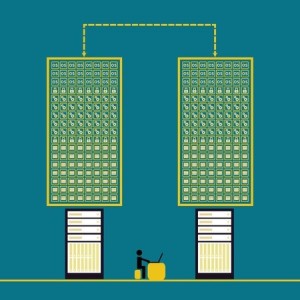Computer users come in many flavors, shapes, and backgrounds. Some merely use computers for simple tasks such as checking E-mail, news, weather, and various other data statistic feeds — these are all simple tasks that don’t require thought about computer maintenance or file/data backup. Other users have a more data-sensitive approach where storing files and various other types of data in a computer are a major factor in their day-to-day computer usage — this means that computer maintenance and data preservation take on a whole different sense of priority. Business owners and managers, for example, would not be able to continue operations after an event that causes data loss unless sound data-backup policies are in place — business continuity and uninterrupted profit should be the priority of businesses, therefore the following preparations and protocol should be part of a business’ IT policy.
Self-Service
There are options for self-servicing, although it’s recommended to obtain professional consulting when setting up any of the following options. There are options within computer operating systems such as Microsoft Windows, Apple Macintosh, and various other operating systems that provide for either manual or scheduled backups of computer files and data. Sometimes third-party programs are preferable if the native programs within the operating system do not fit the needs of the computer user. Whatever the case, granular control of the backup programs can be achieved through various settings. For example, a date and time can be set to run the backup program. Selection of specific folders, directories, and files can be set for backup. Retention settings can be set that determines how long certain files are kept in storage — this helps to manage storage space. Encryption options are also available for backed up files so that they cannot be read by unauthorized individuals. All of these settings can be set to run automatically — on a schedule — or they can be set and run manually.
Other kinds of self-service might include relatively easy methods such as “copying and pasting.” This is a manual type of backup where the user will use the computer keyboard or mouse to copy specific files and/or folders over to an external drive such as a flash drive or external hard drive connected via USB ports. Archiving, retention, and encryption of the files lie in the discretion of the user.
Cloud storage is another form of self-service whereby computer users with an internet connection may subscribe to an internet backup service. Automatic or manual backup using these services are optional. Users may configure the service the same way as in computer operating systems expect that storage is on the internet provided by the backup services. Typically, internet backup service providers will allocate a small amount of free storage space to allow testing their platform. If the computer user likes the service and requires additional storage space, it can be purchased.
Outsourcing
As mentioned previously, self-servicing, especially within environments where data preservation is critical, should be done under the advisement of professionals who understand the twists and turns of backing up computer data. However, self-servicing can be extremely burdensome to companies because of the fact that running businesses is stressful enough without having to deal with the technical side of the computer equipment being used. The priority of a business is ideally production — whereby time is not wasted troubleshooting and dealing with the caveats that can come with backing up computer files and data. IT professionals know exactly how to set up and maintain computer backup programs and services, and properly store the data where it cannot be lost, damaged, or stolen. It’s generally recommended for businesses with a high emphasis on production to obtain the consistent services of professionals who thoroughly understand computer backup systems.
SystemsNet specializes in a wide variety of computer technologies and with many years of experience. Please contact us.


